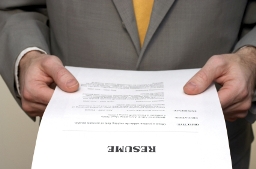 When it comes to dressing for an interview, conservative is always the best way to go. With today’s ever-changing trends, it’s important to wear proper attire and appropriate colors to allow your interviewer to see you in a good light. Making a positive first impression is vital to getting the job you’ve been waiting for, so keep your attire simple.
When it comes to dressing for an interview, conservative is always the best way to go. With today’s ever-changing trends, it’s important to wear proper attire and appropriate colors to allow your interviewer to see you in a good light. Making a positive first impression is vital to getting the job you’ve been waiting for, so keep your attire simple.
What do the colors you wear say about you? Harris Interactive, one of the world’s leading market research firms, recently performed a national study with 2,099 hiring managers and human resource professionals from various industries and company sizes. These professionals were asked to advise job seekers on the best colors to wear to an interview and here are their recommendations provide valuable insight for job seekers.
Dress for Interview Success
Responses show the most recommended colors to wear to an interview are black or blue because these colors show leadership and professionalism. You don’t have to stick to a plain color of blouse and it’s okay to wear small prints, but keep in mind you don’t want the interviewer to be distracted by your wardrobe.
What Not to Wear
Bright orange topped the charts for being the worst color to wear to an interview, because it is the color that is mostly associated with unprofessionalism.
On the other hand, gray portrays a logical and analytical attitude. White shows organization, brown shows dependability, red shows power, and green, yellow, and purple show a creative side.
CareerBuilder offers these tips on dressing for success when preparing your interview wardrobe:
Don’t ever go to an interview too casual, be sure to dress for the environment, and always look polished. Before your interview, do your research on businesses that are interviewing you so you’ll know what their environments are like. For instance, you wouldn’t want to wear shorts and flip flops to a strictly professional business and you wouldn’t want to interview in slacks and a dress coat at a business that is laid back and less professional or you may not come across as the right fit for the job.
Have you been job searching and recently been asked to come in for an interview? Keep these interview wardrobe tips in mind as you’re preparing for your next job interview.
For more advice on interview wardrobes check out these blogs:
Men’s Work Attire That Never Goes Out of Style
Women’s Work Attire That Never Goes Out of Style
Dress For Success: What to Wear for an Interview
Putting Together a Work Wardrobe


